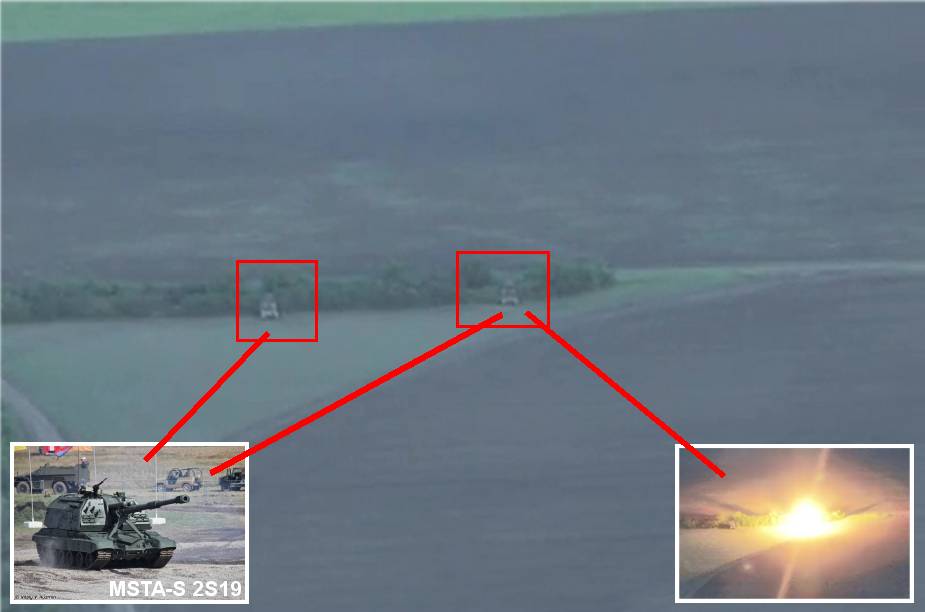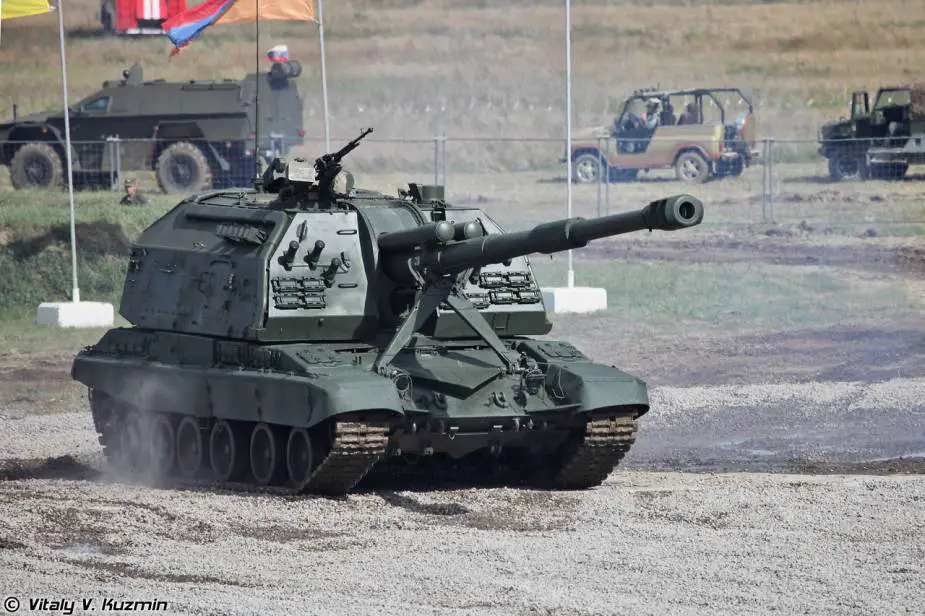- Army
- Conflicts in the world
- Israel - Iran conflict 2025
- Pakistan - India Conflict 2025
- Russia Ukraine War 2022
- Libya conflict day by day
- HAMAS - Israel War 2023
- Operation Serval in Mali French Army
- Sangaris operation Central African Republic
- Sangaris opération militaire République Centreafrique
- Ukraine - Russia conflict
- Syria conflict news
- Defence & Security Industry Technology
- Armies in the world
- Analysis Defense and Security Industry
- Conflicts in the world
- Navy
- Air
Using HIMARS Ukrainian forces destroy five Russian MSTA-S howitzers in key counter-offensive
In recent unfolding events from the enduring strife in Ukraine, a video surfaced on Telegram on June 14, revealing the Ukrainian army's successful counter-battery operation using American HIMARS Multiple Launch Rocket System (MLRS) against Russian artillery in North-East Yalynskye, Donetsk Oblast. The operation reportedly led to the destruction of five units of the Russian MSTA-S, 2S19 152mm tracked self-propelled howitzers.
Follow Army Recognition on Google News at this link

Ukrainian soldiers destroy five Russian MSTA-S 2S19 152mm self-propelled howitzers in one counter-battery operation. (Picture source Video footage Telegram)
The American-made High Mobility Artillery Rocket System (HIMARS), a lightweight multiple rocket launch system, played a significant role in this offensive. The HIMARS, known for its ability to launch six guided rockets or one tactical missile within mere seconds, has been a game-changer in the war in Ukraine, offering advanced fire support with superior accuracy.
The Russian 2S19 MSTA-S, on the other hand, is a self-propelled 152mm howitzer. Named after the Msta River, this artillery piece is built for high mobility and robust firepower, even under intense enemy fire. With its shoot-and-scoot capabilities, the MSTA-S can fire and then quickly relocate to evade counter-battery operations.
The 2S19 MSTA-S, a self-propelled 152mm howitzer, has a maximum firing range of approximately 29 kilometers with standard projectiles, and up to around 36 kilometers when using rocket-assisted projectiles.
On the other hand, the High Mobility Artillery Rocket System (HIMARS) is capable of launching guided rockets—known as GMLRS (Guided Multiple Launch Rocket System) — with a maximum range of about 70 to 90 kilometers, depending on the specific variant of the rocket. This long-range, combined with high accuracy, makes the HIMARS a formidable asset on the modern battlefield.
In this particular operation, drones were instrumental in identifying the location of the Russian MSTA-S artillery units. These unmanned aircraft systems, ranging from smaller quadcopters to larger military-grade drones, are equipped with high-resolution cameras and sometimes thermal imaging. They provide critical, real-time intelligence, enhancing the Ukrainian army's situational awareness significantly.
With the Russian artillery's positions pinpointed accurately, the Ukrainian forces planned their counter-battery fire. This tactic, designed to suppress or destroy an enemy's artillery, saw the use of the HIMARS rocket launchers to launch guided rockets against the identified targets.
The Ukrainian forces used data gathered from drone surveillance to calibrate their artillery accurately, adjusting for factors like range, elevation, and wind speed. This level of precision, possibly further refined using radar systems or acoustic sensors, ensured the effectiveness of their counter-battery fire.
Following the launch of projectiles towards the identified Russian 2S19 MSTA-S units, the drones were once again put to use, this time for battle damage assessment. The aim was to verify the success of the mission and to confirm whether the enemy artillery had been neutralized.
This operation demonstrates the increasingly central role of technology, such as drones and advanced artillery systems, in modern warfare. The conflict continues, with both sides employing a wide range of tactics and equipment in an ongoing battle of strategic supremacy.

Russian army 2S19 MSTA-S 152mm tracked self-propelled howitzer. (Picture source Vitaly Kuzmin)


























